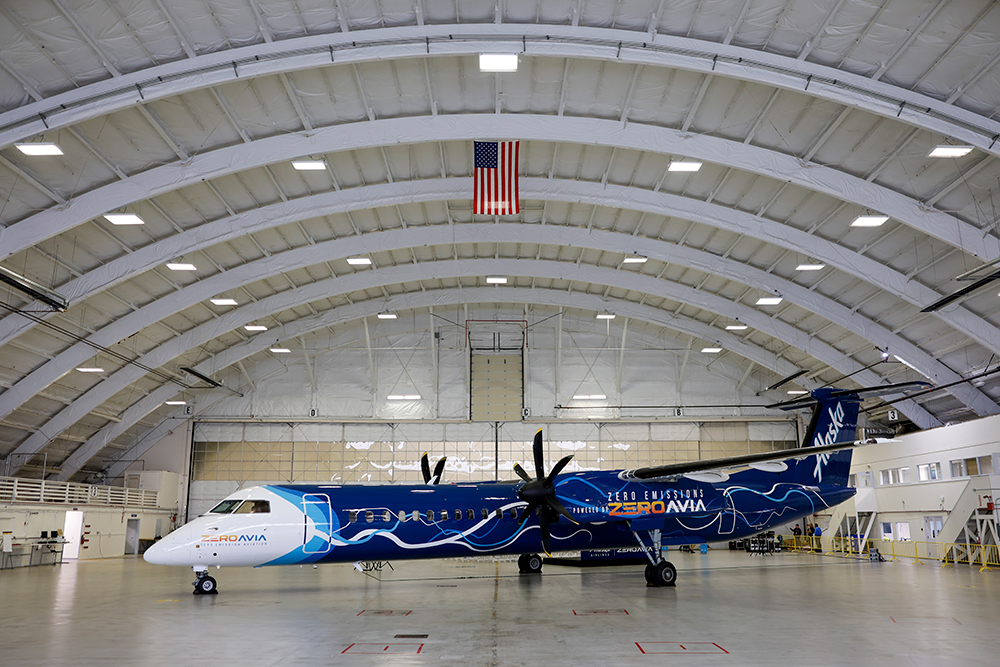Alaska Airlines and ZeroAvia begin developing world’s largest zero-emission aircraft
Share
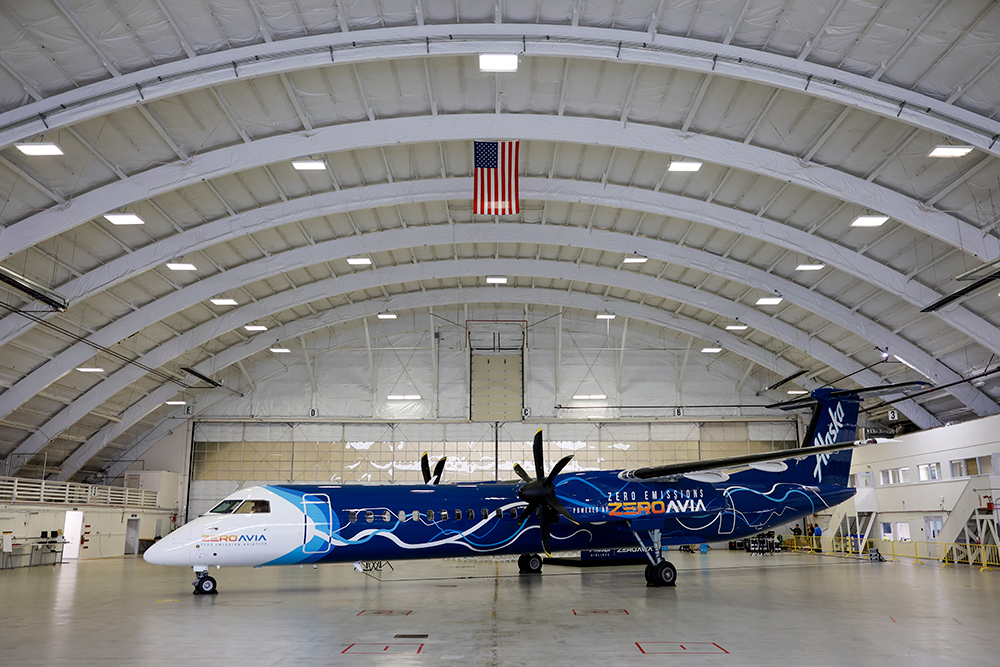
Washington Gov. Jay Inslee, U.S. Rep. Suzan DelBene and Snohomish County Executive Dave Somers join CEOs from Alaska and ZeroAvia to launch retrofitting of aircraft
ZeroAvia unveils world’s most advanced electric motor technology for aviation, paving way for hydrogen-electric engines for Dash 8 and similar airframes
Alaska Airlines today presented a Bombardier Q400 regional turboprop to ZeroAvia that will be retrofitted with a hydrogen-electric propulsion system in an effort to expand the reach and applicability of zero emissions flight technology.
At an event, held at ZeroAvia’s Paine Field research and development site, the companies were joined by high school students from Raisbeck Aviation High School, Washington State Governor Jay Inslee, Congresswoman Suzan DelBene and Snohomish County Executive Dave Somers to participate in the formal handover of the 76-seat Q400 aircraft that will be developed by ZeroAvia, the U.S.-headquartered leader in designing and building zero-emission, hydrogen-electric aircraft propulsion systems for aircraft.
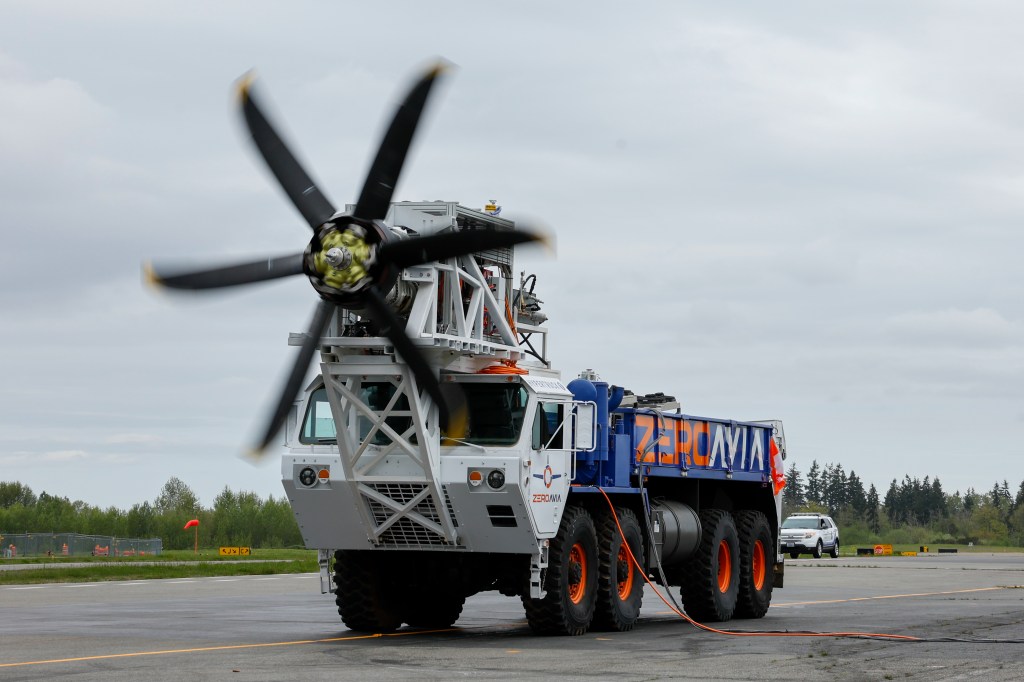
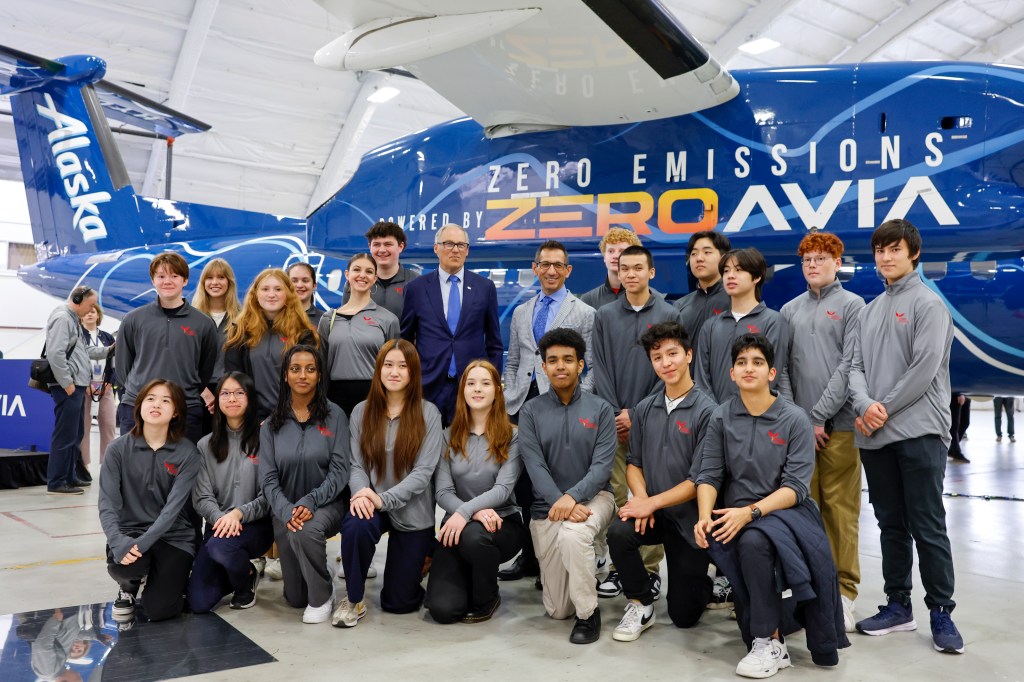
When Alaska Airlines’ regional carrier Horizon Air retired its Q400 fleet, it reserved one of the aircraft for research and development purposes to further advance zero emissions technology for the aviation industry. The aircraft was repainted with a special livery to highlight the innovative mission of this partnership.
ZeroAvia also debuted its breakthrough multi-megawatt modular electric motor system in a 1.8MW prototype configuration at the event – demonstrated with a propeller spin aboard the ZeroAvia’s 15-ton HyperTruck ground-test rig. Combined with higher temperature PEM fuel cells and advanced power electronics – both technologies that ZeroAvia is developing in-house – the leading-edge electric motor technology is one of three key building blocks for enabling commercially-relevant hydrogen fuel cell engines for larger aircraft.
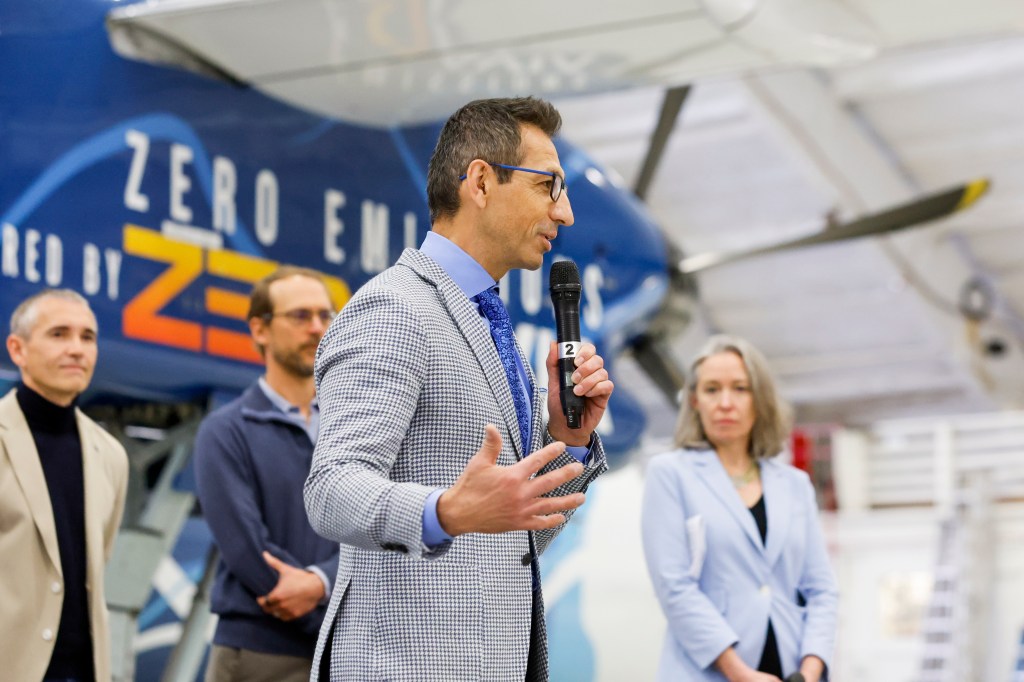
This is a great step forward in aviation innovation, to help create a new future of flight – right here at home,” said Alaska Airlines CEO Ben Minicucci. “Alaska Airlines has defined a five-part journey to achieve net zero carbon emissions long-term, but we can’t get there alone. New technologies are required to make that future possible, and we’re thrilled to partner with industry leader ZeroAvia to make new zero emissions options a reality.”
Aligning ZeroAvia’s powertrain with the Dash 8-400 airframe will represent a commercially viable zero-emission aircraft with fuel cell engine technology around five times more powerful than what has been demonstrated anywhere to date.
“Demonstrating this size of aircraft in flight, powered entirely by novel propulsion, would have been unthinkable a few years ago,” said Val Miftakhov, founder and CEO of ZeroAvia. “Launching this program puts us on track for a test flight next year, and accelerates our progress toward the future of zero-emission flight for Alaska Airlines and for the world at large.”
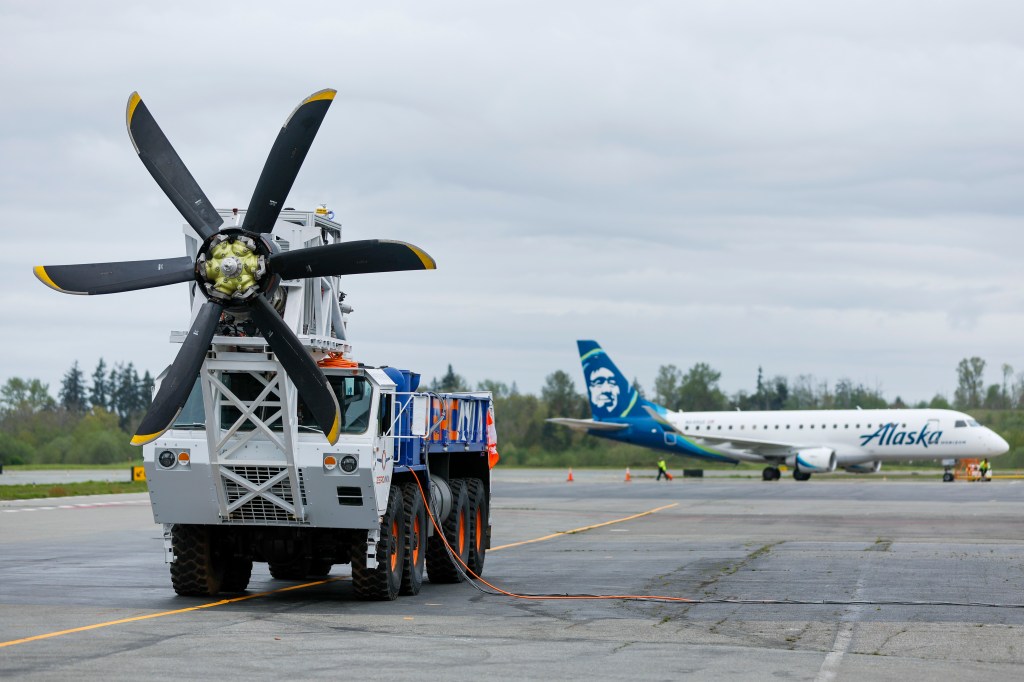
ZeroAvia’s recent advancements clear the way for a potential flight of the Q400, also recognized as the Dash 8-400, but also demonstrate rapid progress toward certification of the ZA2000 propulsion system. ZeroAvia has already demonstrated a track-record of world-first flight testing. In January, ZeroAvia flew a retrofitted 19-seat aircraft with its prototype 600kW hydrogen-electric engine (ZA600). This followed the demonstration flight of a 250kW system in 2020, which at the time of flight was the world’s largest aircraft flown using a novel zero-emission power source.
ZeroAvia’s hydrogen-electric engine uses fuel cells to generate electricity from hydrogen fuel, before using that electricity to power electric motors which turn the aircraft propellers. The certifiable ZA2000 system will include ZeroAvia’s High Temperature PEM fuel cells and liquid hydrogen fuel storage, integral to delivering the necessary energy density for commercial operations of large regional turboprops. The company has already established an engineering partnership with De Havilland of Canada, the original manufacturer of the Dash 8 family of aircraft to enable exchange of data and expertise with the airframe.
In 2021, Alaska Airlines launched a partnership and invested in ZeroAvia to support the development of zero emissions propulsion technology for regional aircraft. As the fifth largest U.S. airline with a large regional network, Alaska has a unique opportunity to support the development of zero-emissions propulsion technology for regional aircraft. By establishing the viability of regional-sized aircraft, both companies will help advance zero-emissions technology across the industry.
Our state has a rich history of leadership in aerospace and we’re proud to be at the center of a technological revolution in zero-emission flight. Through innovation and partnerships like the one demonstrated today, we can help write the next chapter of aviation history right here in Washington State.”
Washington State Governor Jay Inslee
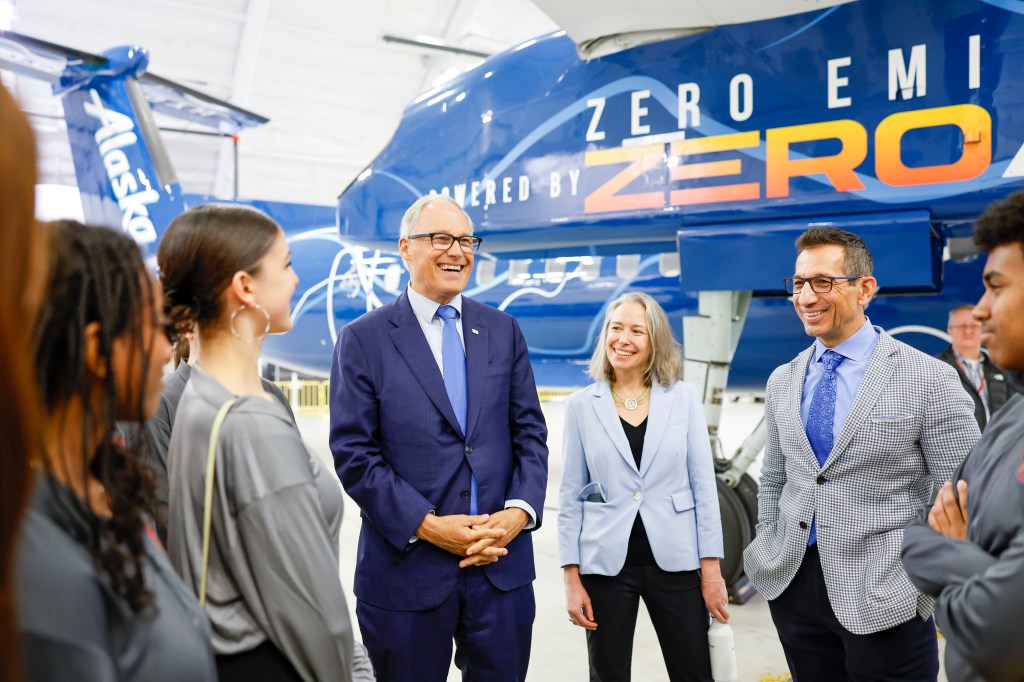
Congresswoman Suzan DelBene (WA-01) said: “As we work to meet our emissions reduction goals, we must prioritize decarbonizing the commercial transportation sector. Washington state is leading the nation in developing and deploying clean energy technologies and the Alaska Airlines-ZeroAvia partnership is a prime example. This collaboration could revolutionize the aviation industry to make our planes greener and our skies cleaner.”
Snohomish County Executive Dave Somers said: “As a leader in supporting innovative industries, and as the center of aerospace manufacturing in Washington state, Snohomish County is proud to support this partnership and the development of the next generation of aviation technology, driving both job growth and environmental sustainability.”
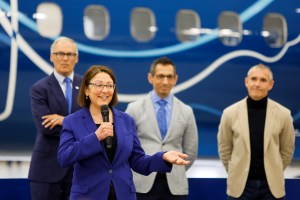
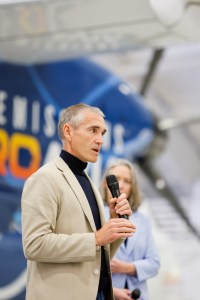
Click here to download images from story >>
HyperCore Motor
The 1.8MW motor configuration demonstrated today consists of two “HyperCore” motor modules, each a high-power, high-speed 900kW permanent magnet radial flux machine which operates at 20,000 rpm, matching the typical turbine engine power turbine speeds, providing an unprecedented 15kW/kg motor power density. Crucially, HyperCore’s modular design enables the technology to address applications ranging from 900kW up to 5.4MW, meeting a number of regional turbo-prop and regional jet requirements. The HyperCores were successfully integrated with the stock Dash 8-400 engine gearbox and propeller, which dramatically simplifies integration into the aircraft as a replacement for a stock turbine engine.
The development and testing program will enable the understanding and measurement of system dynamics, calibration of physical and electrical models, and validation of thermal management systems. The company is concurrently developing world-class silicone-carbide power electronics and the matching hydrogen fuel cell systems, which convert hydrogen to electricity, powering the electric propulsion system. These systems will be brought together to create the full hydrogen-electric propulsion system, tested on the ground and then in the air.
About ZeroAvia
ZeroAvia is a leader in zero-emission aviation, focused on hydrogen-electric aviation as the initially targeting a 300-mile range in 9–19 seat aircraft by 2025, and up to 700-mile range in 40–80 seat aircraft by 2027. Based in the US and the UK, ZeroAvia has already secured experimental certificates for its three prototype aircraft from the CAA and FAA, passed significant flight test milestones, secured a number of key partnerships with major aircraft OEMs, secured $10B in pre-orders from a number of the major global airlines, and is on track for commercial operations in 2025. The company’s expanding UK operations are supported by grants from UK’s Aerospace Technology Institute and Innovate UK, and ZeroAvia is part of the UK Government’s Jet Zero Council. For more, please visit ZeroAvia.com, follow @ZeroAvia on Twitter, Instagram, and LinkedIn.
About Alaska Airlines
Alaska Airlines and our regional partners serve more than 120 destinations across the United States, Belize, Canada, Costa Rica and Mexico. We strive to be the most caring airline with award-winning customer service and an industry-leading loyalty program. As a member of the oneworld alliance, and with our additional global partners, our guests can travel to more than 1,000 destinations on more than 25 airlines while earning and redeeming miles on flights to locations around the world. Learn more about Alaska at news.alaskaair.com and follow @alaskaairnews for news and stories. Alaska Airlines and Horizon Air are subsidiaries of Alaska Air Group.

